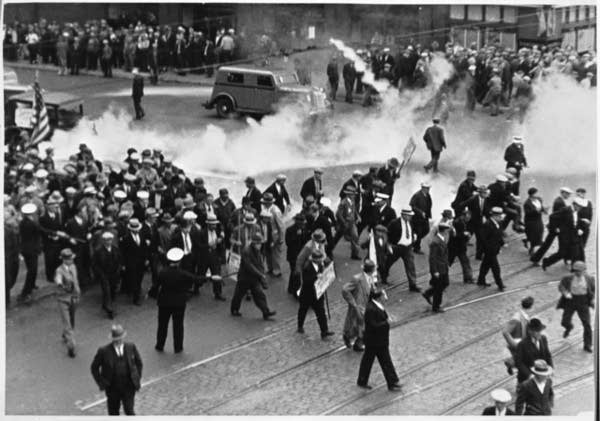Proposed plaque would mark Mpls. scene of 'Bloody Friday' strike

Police sprayed tear gas at strikers during the summer of 1934 in Minneapolis.
Courtesy Minnesota Historical Society
Go Deeper.
Create an account or log in to save stories.
Like this?
Thanks for liking this story! We have added it to a list of your favorite stories.


